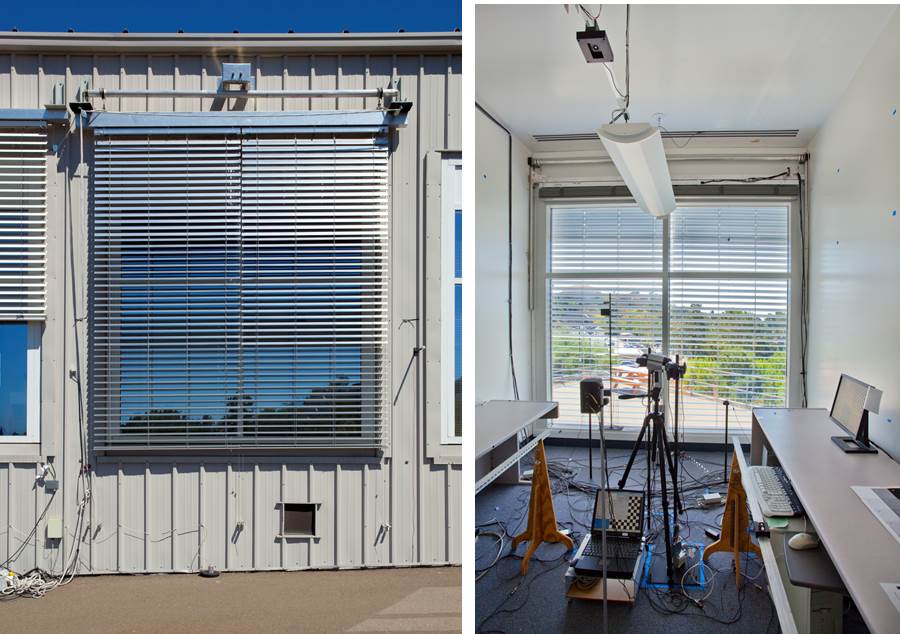Exterior Shading
Solar radiation through windows can have positive benefits, such as providing enough daylight that electric lighting can be turned off during parts of the day, or drawbacks, such as increased air-conditioning to cool the interior due to excess solar heat gains. This makes solar control, the technique of reducing the admission of unwanted solar radiation, an important feature of energy-efficient, zero net energy buildings.
Exterior shading is known to be particularly effective at reducing perimeter zone energy use and demand. LBNL researchers are conducting simulated and monitored evaluations of commercial and prototype shading systems to encourage more widespread use of this technology and the development of alternate options that solve cost and maintenance issues associated with this conventional technology.

This manually-operated, three-zone, exterior louvered shading system is designed to provide solar control while balancing the needs for daylight, view and glare control. Field measurements in the Advanced Windows Testbed indicate reductions of 66-69% in daily and peak window cooling loads and near comparable daylight compared to a conventional indoor venetian blind.



